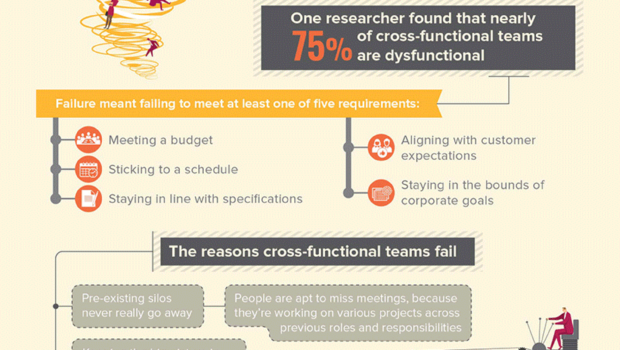Cross-Functional Integration and Companies [Infographic]
Market volatility, increasing complexity and a constantly evolving marketplace have made collaboration more important than ever in an uncertain business landscape. Resultingly, organizational leaders are continually in search of innovative practices, opportunities and resources that can help to identify new threats and opportunities.
The cross-functional integration business structure is a relatively new framework. While the theory behind the practice is sound, many enterprise leaders struggle to effectively leverage this innovative organizational format. Part of the problem is that cross-functional integration is incontrovertibly counterintuitive in the face of traditional business structures.
Business leaders have found success with cross-functional integration by focusing on four dimensions of collaboration; enterprise-wide centralized management, silo collaboration, effective gathering of all perspectives and facilitating communication between interdisciplinary specialties. By focusing on these four areas, enterprise leaders have delivered improved financial, strategic and talent related outcomes.
Overcoming the influence of silos is difficult for any enterprise. While many organizations tout the virtues of collaboration, the overwhelming influence of silo entrenched business units still exists. Business units can be separated by characteristics such as specialty, geography, corporate level, culture or occupation. Cross-functional integration serves to connect these segregated business units, reveal innovative ideas and produce positive outcomes. The structure allows firms to produce higher revenues because staff members are empowered to deal with higher value issues. However, organizations cannot achieve success with cross-functional integration until they convince stakeholders to sincerely appreciate the contributions made by other silos. When this occurs, stakeholders are willing to share control over the direction of initiatives. Cross-functional integration facilitates this by transcending the boundaries of business units and maximizing the contributions of professionals from different specialties. For instance, preparing a product for market requires the partnering of different departments such as research and development, marketing, finance and logistics. Additionally, other departments – such as information technology, communications, digital operations and marketing – must collaborate to create a seamless user experience for all stakeholders.
In today’s marketplace, maintaining segregated units is no longer a viable way to do business. One would think that with such a pressing need for collaboration that most enterprises would figure out how to get it right. Organizational stakeholders must learn to focus on shared outcomes, use well-defined decision-making processes and improve collaboration.
Successful cross-functional integration initiatives require the widespread adoption of a team mindset. Task, projects and teams must be unified. To facilitate this, executive leaders must emphasize teamwork from the day that new projects begin, and stakeholders must be willing to discuss failures and take actions to keep projects performing optimally. While stakeholders will always retain a degree of loyalty to their prospective business units, cross-functional integration strengthens relationships across silos and promotes innovative thinking. Through cross-functional integration, forward thinking business leaders can clarify the purpose of their projects, produce optimal outcomes and develop the team-oriented mentality that’s required for prosperity in the modern marketplace.
Learn more about the latest innovation in organizational structure and collaboration by clicking here to browse a revealing infographic created by the New Jersey Institute of Technology Online Master of Business Administration degree program.
















